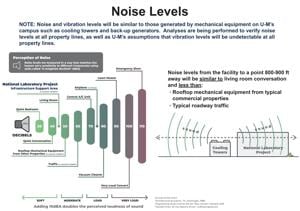The future landscape of U.S. foreign aid is under scrutiny as the nation grapples with the implications of significant cuts made during the Trump administration. These reductions, which saw the elimination of USAID programs and a shift of remaining operations to the State Department, have raised alarms among policymakers and humanitarian advocates regarding the potential humanitarian crises that could arise. With global aid roles evolving, the question of what the United States’ position will be in the international aid environment by 2035 remains critical.
Impacts of USAID Cuts
The drastic cuts to USAID have had immediate and far-reaching consequences. A study published in a prominent journal highlighted that these cuts could lead to an estimated additional 14,051,750 deaths by 2030, including over 4,537,157 among children under five. The cessation of USAID programs has resulted in the destruction of vital health and education initiatives in various regions, exacerbating existing vulnerabilities.
As the largest provider of foreign aid globally, the United States’ withdrawal has raised concerns about the potential rise of alternative powers in the humanitarian space. Notably, China is poised to fill the void left by the U.S., enhancing its influence in the Global South. Critics, including former USAID Administrator Samantha Power and Senator Chris Coons, have expressed concerns that these actions are facilitating China’s emergence as the preferred partner for many nations.
Four Scenarios for U.S. Foreign Aid in 2035
With the complex interplay of domestic and international factors, the future of U.S. foreign aid could unfold in several ways. The Stimson Center’s Reimagining U.S. Grand Strategy Program outlines four plausible scenarios for U.S. engagement in foreign aid by 2035. These scenarios consider both humanitarian and development assistance, recognizing different political landscapes and public sentiments.
The first scenario, titled “America Returns,” suggests a political shift where voters reject Trump-style nationalism. This change could lead to a resurgence of U.S. commitment to foreign aid, in response to increasing geopolitical competition with China and growing humanitarian needs due to climate change. In this scenario, U.S. policymakers would prioritize rebuilding relationships with countries in the Global South through robust aid programs, leveraging modern accountability measures.
In contrast, the “China Leads” scenario posits that the U.S. remains reluctant to re-engage in significant foreign aid. In this context, China could capitalize on America’s absence to emerge as a leader in humanitarian assistance, using its economic resources to forge stronger ties with affected nations. This shift may marginalize the U.S. in global humanitarian circles.
Another scenario, “Aid Adrift After Trump,” envisions a U.S. foreign aid strategy hampered by domestic political upheaval. Policymakers may struggle to prioritize foreign assistance amid pressing internal issues, resulting in minimal increases in aid levels and a loss of soft power influence.
Lastly, “Nationalism Unbound” depicts a future where nationalism prevails, leading to a significant decline in U.S. foreign aid efforts. The U.S. may limit its assistance to token projects, withdrawing from global responsibilities while facing increasing resentment from nations in need.
Ultimately, the decisions made by U.S. policymakers in the coming years will shape the nation’s role in international aid, with implications for global humanitarian efforts and diplomatic relations. As the world navigates a complex geopolitical landscape, the future of U.S. foreign aid remains uncertain, but its impact on millions of lives will continue to be profound.
As the Stimson Center report outlines, the choices made regarding foreign aid will not only reflect U.S. priorities but also influence international relations and the humanitarian landscape for years to come. The critical question remains: will the United States reclaim its role as a leader in foreign assistance, or will it cede this space to emerging powers like China?






































































